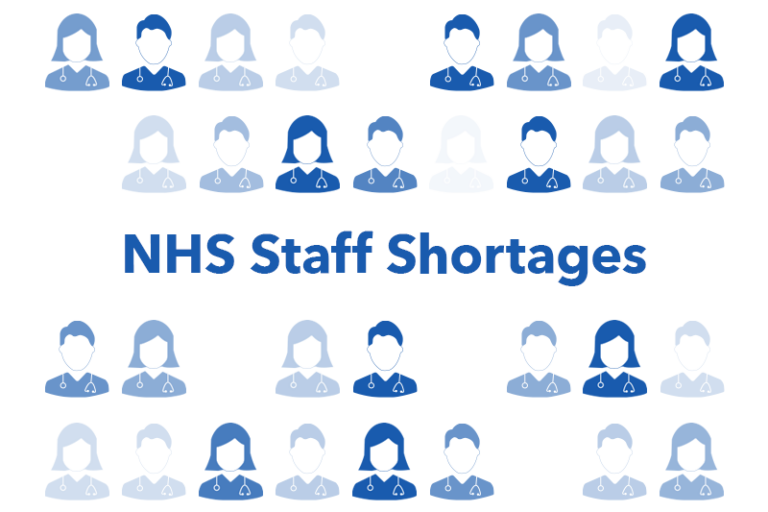The NHS has been on a quest for digitisation since former British Secretary of State for Health and Social Care, Sajid Javid, set a target in 2022 for 90% of trusts to have an EPR. After failing to meet their initial goal of December 2023, the NHS has set a new target to reach 95% of trusts with an EPR by March 2025.
“EPRs are the essential prerequisite for a modern, digital NHS. Without them we cannot achieve the full potential for reform,” said Javid when he first introduced the target.
As NHS trusts prepare for the transition, there are several steps they can take to ensure a successful EPR go-live.
What is an EPR?
Put simply, the Electronic Patient Record (EPR), also referred to as an Electronic Medical Record (EMR) or Electronic Health Record (EHR) in other countries, is a digital version of a patient’s paper chart. However, EPRs also provide a multitude of healthcare functions, including clinical assessments, orders and results, clinical communication and documentation, scheduling, prescribing, patient portal and much more.
The benefits of an EPR
The adoption of EPRs in healthcare has been complicated. The United Kingdom initially set forth a goal to implement EPRs in all NHS trusts by 2010, which was not successful. User proficiency and satisfaction remain a concern. Poor implementation of EPRs is associated with higher rates of clinician burnout and plans to leave clinical roles. However, with proper implementation and user training, EPRs can be an invaluable tool for any health and care system.
When used effectively, EPRs help health organisations improve the quality of care and patient and staff experience, reduce medical errors and increase provider efficiency by:
- Providing accurate, up-to-date and complete patient information at the point of care
- Enabling quick access to patient records and clinical functionality
- Sharing information with patients and other clinicians
- Helping providers diagnose conditions, reduce medical errors and provide safer care
- Improving communication between providers, patients and other healthcare providers
- Enhancing privacy and security of patient data
While the EPR is a valuable tool for health systems, it is essential to provide adequate training and support for EPR users. The increased reliance on technology has left many clinicians feeling fatigued and burned out. Clinician burnout has long been impacting healthcare, and much of that is attributed to inefficient use of the EPR. Fortunately, studies show that user role and workflow-specific training and support can improve satisfaction with the EPR and reduce burnout.
HIMSS EMRAM stage 5 – the standard for digital transformation
The HIMSS Electronic Medical Record Adoption Model (EMRAM) stage 5 will serve as the minimum baseline for the NHS’ digital transformation. EMRAM is a scoring model that health systems can use to measure their digital maturity. It provides a detailed roadmap to ease adoption and begin a digital transformation journey.
More details can be found on the HIMSS website, but stage 5 requirements include (and are not limited to):
- More than 75% of clinical documentation is created using online tools and available to clinical team members.
- More than 25% of medications are electronically identified at the bedside.
- The electronic system continuously monitors at least one patient condition, such as vital signs or laboratory values, in order to automatically alert care team members about risks of patient health status deterioration.
- Health Information Exchange (HIE) allows documents from external sources to be integrated into the Clinical Data repository.
- Emergency situations/cases have a defined documentation strategy to verify accuracy of care interventions.
- Secure texting in place between clinicians to enable team communications and collaboration.
- Bidirectional interfaces are in place to external HIE for both inbound and outbound updates.
- Care teams offer telehealth to support patient surveillance, consultation and treatment both prior to admission and post discharge.
- Clinical governance assesses effectiveness of computerized provider order entry (CPOE) and approves changes to workflow to improve staff efficiencies.
- Data analytics governance has defined outcomes for captured data.
The NHS has divided trusts into four groups ranging from the lowest Group 0 (which have no EPR) to Group 3 (equivalent to EMRAM Stage 5 or above). Trusts in the lower groups will receive priority for funding and assistance in their EPR implementation and optimization journey.
Preparing for EPR go-live and adoption with proper education
While the NHS is providing funding and support for trusts as they make their digital transformation, there are still steps trusts can take on their own to ensure a successful EPR go-live. Most importantly, trusts should prioritize their EPR education. A positive experience with EPR education (and training) is associated with higher EPR satisfaction and reduced reports of clinicians planning to leave their practice. Here are some things to consider when building out your EPR training and education strategy:
Scalability – Between surging turnover rates and frequent EPR workflow changes and upgrades, a successful EPR education strategy must be scalable and poised for change. Traditional instructor-led training can pose a challenge for trusts looking to scale their EPR education. Consider a virtual training strategy that enables EPR users to engage with self-paced learning materials, freeing up training teams to focus on creating valuable content and providing one-on-one coaching as needed.
Accessibility – Training and support content is only as effective as it is accessible. One of the main challenges with traditional classroom training is that users must wait for a scheduled lesson to receive EPR support. When considering virtual support options, think about how users will access content. Content should be centralized in one location, so it is quick and easy to find. Placing content directly in the workflow can increase engagement with the EPR workflow.
When M Health Fairview embedded a microlearning video in the workflow of a new eConsent navigator in Epic, engagement with the new navigator increased from just 7% to 87%. With help available directly in their workflow, users were able to quickly access the support they needed and felt confident navigating their new workflow.
Timeliness – In a traditional classroom setting, learners begin forgetting what they’ve learned as soon as they leave the classroom. To combat the Ebbinghaus Forgetting Curve, trusts should consider a just-in-time training strategy. Providing timely microlearning opportunities that allow users to learn while they work helps them commit new skills and information to memory and be more efficient EPR users. This can also reduce calls to the help desk, saving the organization valuable time and resources.
Relevance – Another challenge with traditional classroom training is it’s often not relevant to users. Nurses and physicians are often grouped into the same lesson, which means the material is not specific to their role or workflow. When developing an EPR education strategy, ensure materials are specific to user role and workflow.
Accuracy – With so many different roles, workflows and change upgrades, keeping learning materials accurate and up to date can be difficult. Traditional classroom training lends itself to inconsistencies between instructors, where each instructor may present information differently or have varying levels of knowledge on the system. If you plan to deliver training virtually, consider a solution that hosts all your training in a centralized location to ease content management and upkeep.
EPR training with uPerform
uPerform is a just-in-time training and support platform that delivers learning content to users when and where they need it most – in their workflow. Content is role specific and can be accessed directly from the EPR. Training teams create content in half the time with the uPerform recorder and benefit from tools that aid content management. Health systems using uPerform report increased EPR satisfaction, higher rates of adoption and a reduction in time spent in training.





